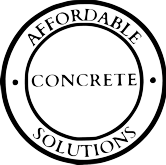A retaining wall is used to accent a property, create a boundary, or divide it. It can also be used to landscape hills and other terrains. First, prepare the site. This requires excavation, where you dig a trench for drainage and wall construction. Once the trench is dug, make sure the ground is level and compacted. Then, add sand or gravel, and compact the soil. Tapping the ground will help the wall remain stable and avoid shifting.
The cost of installing a retaining wall varies depending on its style and design. The more complex the retaining walls are, the more they cost. A wooden retaining fence is less expensive but requires more maintenance. The cost of a wood retaining wall can vary a lot, so be sure to plan ahead. For smaller projects, hiring a contractor may be more cost-effective.
A retaining wall is an important part of a landscaping design. It can direct water to certain areas. This is especially helpful if a slope is located near water. There are a variety of city and state regulations related to retaining walls, so doing your research before constructing a retaining-wall is essential to making the most efficient use of the space. However, these requirements can be complicated if you haven’t planned ahead.
A retaining wall can be built in a number of ways. Some methods are preferred over others depending on the materials used and your specific landscaping needs. A landscaper may recommend a particular method based on your preferences. Retaining walls can protect a building’s foundation and improve irrigation on sloped areas. Moreover, they can add attractive design features to your landscape design. And what’s more, you can build a wall that combines a variety of benefits.
There are several types of retaining walls available for purchase. Some are inexpensive, while others are made from durable materials. Choosing the right material is crucial for the durability of your retaining wall. Some materials, like concrete, may not last for long, while others are more durable. Once you’ve selected a material, you’ll need to make a design for it. If you’re building a retaining wall, you’ll need to consider the height of the block and the slope of the ground.
A retaining wall can be constructed from a number of materials. While concrete retaining walls are not the most popular among residential builders, they’re popular for their aesthetics. But they can be expensive to install, and they can also be unstable. A single crack can compromise the entire system, forcing you to replace it. Additionally, concrete retaining walls usually have wide footings, which may affect planting conditions near the retaining wall.
Besides concrete, another option for retaining walls is anchored retaining walls. These can be built in any style, but they are more expensive, and they require special equipment. Typically, anchored retaining walls are anchored into the ground using a boring machine. They are a great choice for retaining walls that are not too tall or have an extremely narrow profile. In some cases, this type of retaining wall may be more economical than a brick or dry stack retaining wall.
When planning to build a retaining wall, be sure to consider the location. The soil around a retaining wall is usually very dense. A high-density concrete retaining wall can hold up to 9 feet of earth. If the retaining walls are placed too high, they might collapse. To prevent this, it is better to dig a shallow hole and allow for the foundation to drain. Once the retaining wall is finished, it will be easier to withstand the weight of the back-fill.
The retaining wall can be made of panels or tiered. Its design depends on the type and slope of the site. Whether you want a tall or low retaining wall, you can choose the one that best suits your project. The height and width of panels is up to you. And the material used to build a panel wall can be custom-designed for aesthetic purposes. You can also choose a retaining-wall with an anchored structure.
We’re here to help!
If you don’t find the answer to your question here, please fill-out the form below and we will reply as soon as possible.
Thank you.
Ready to get started on your next concrete job, or just need more information? Call, text or send us an email us today.
